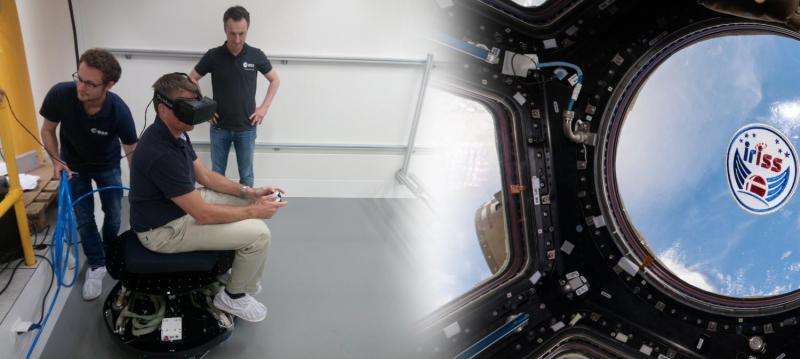Video: Using VR in ESA's Orbital Robotics Lab

Danish ESA astronaut Andreas Mogensen during a summer visit to ESTEC's Orbital Robotics Laboratory, experiencing weightless motion in 2D – courtesy of a friction-free air-bearing platform combined with a virtual reality headset.
The Orbital Robotics Lab, used to test out mission scenarios involving microgravity or low-gravity environments, incorporates a 4.8 x 9 m epoxy floor smoothed to within 0.8 mm across its surface.
Like an air hockey table, air-bearing platforms can glide freely across it, to simply and easily replicate the dynamics of low-gravity motion in two rather than three dimensions.
Seen here with colleague Matthias Maurer of the European Astronaut Centre and lab engineer Marius Kilmavicius, Andreas could compare the experience to his memories of actual weightlessness – he went on a 10 day mission to the International Space Station last September.
The Oculus Rift headset, meanwhile, displayed a visualisation of the interior of the ISS as its wearer glided about.
Note the shoe covers worn by everyone; the epoxy floor must be kept dust-free to maintain its pristine smoothness.
ESTEC, based in Noordwijk, the Netherlands, is ESA's technical heart, where most Agency space missions are first designed then guided through development. It is home to a suite of specialist labs and a full-scale satellite test centre.
Provided by European Space Agency


















